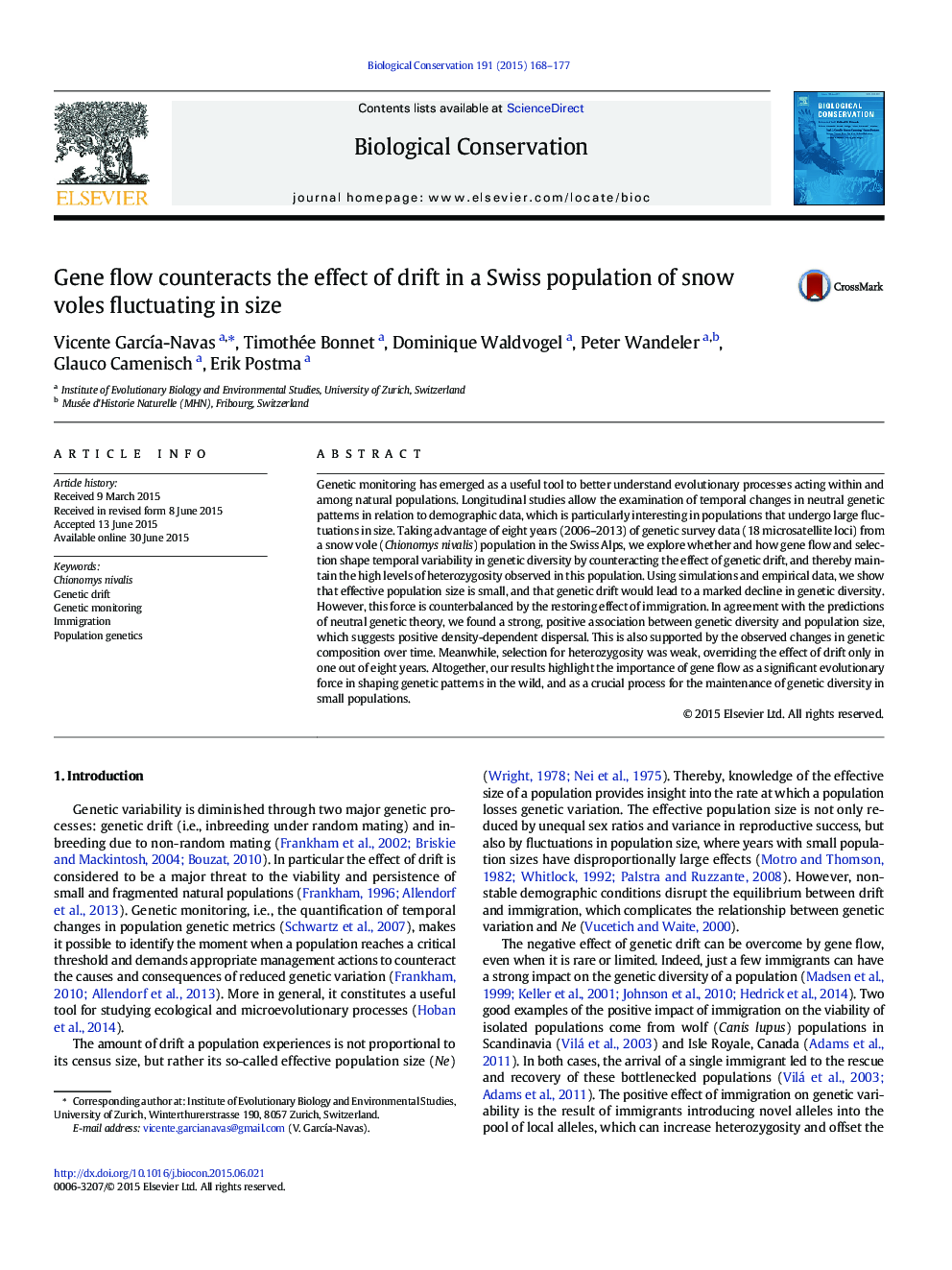| کد مقاله | کد نشریه | سال انتشار | مقاله انگلیسی | نسخه تمام متن |
|---|---|---|---|---|
| 6298937 | 1617910 | 2015 | 10 صفحه PDF | دانلود رایگان |
- We examined temporal genetic patterns in an Alpine population of snow voles.
- Despite of small effective population size genetic diversity remained high.
- The arrival of a few immigrants can counteract the effect of genetic drift.
- Population size constitutes a good proxy for genetic variability.
Genetic monitoring has emerged as a useful tool to better understand evolutionary processes acting within and among natural populations. Longitudinal studies allow the examination of temporal changes in neutral genetic patterns in relation to demographic data, which is particularly interesting in populations that undergo large fluctuations in size. Taking advantage of eight years (2006-2013) of genetic survey data (18 microsatellite loci) from a snow vole (Chionomys nivalis) population in the Swiss Alps, we explore whether and how gene flow and selection shape temporal variability in genetic diversity by counteracting the effect of genetic drift, and thereby maintain the high levels of heterozygosity observed in this population. Using simulations and empirical data, we show that effective population size is small, and that genetic drift would lead to a marked decline in genetic diversity. However, this force is counterbalanced by the restoring effect of immigration. In agreement with the predictions of neutral genetic theory, we found a strong, positive association between genetic diversity and population size, which suggests positive density-dependent dispersal. This is also supported by the observed changes in genetic composition over time. Meanwhile, selection for heterozygosity was weak, overriding the effect of drift only in one out of eight years. Altogether, our results highlight the importance of gene flow as a significant evolutionary force in shaping genetic patterns in the wild, and as a crucial process for the maintenance of genetic diversity in small populations.
Journal: Biological Conservation - Volume 191, November 2015, Pages 168-177
